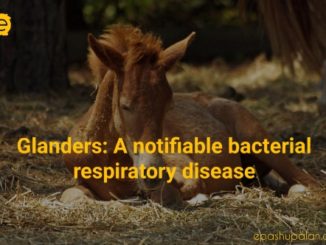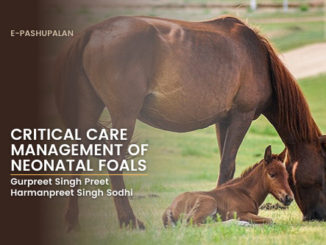Detection of enterotoxins in food of animal origin
Laboratory confirmation is based mainly on detection of S. aureus or demonstration of the presence of enterotoxin in the food or vomitus. At least 105 S. aureus per g or ml from food is confirmed as positive. For detection of enterotoxins various detection methods are used viz. bioassays, molecular biology, and/or immunological techniques.
Detection methods for S. aureus enterotoxin by bioassays can be done in vivo or in vitro. In vivo test is based on the capacity of suspected food or vomitus extract to induce symptoms such as vomiting, gastrointestinal symptoms in animals. Kitten and Rhesus monkey (Macaca mulatta) are used for in vivo detection of staphylococcal enterotoxins. In monkey feeding test Rhesus monkeys are used. This method was developed by Jordan and McBroom in 1931. Suspected food homogenate mixture is fed to monkey by stomach tube and then continuously observed for five hours.
Kitten feeding test was developed by Dolman in 1936 and the test is performed by giving injection of filtrate into abdominal cavity of kitten weighing 250-500g. But major disadvantage with this method was false-positive results. Administration of filtrate IV is most commonly used. Animal is continuously observed for emesis. But monkey feeding test is considered more specific then kitten feeding test. Recently some other animal models are also used like house musk shrews (Suncus murinus). In vitro testing is based on the principle of superantigenic action in cell cultures by enterotoxins using cell lines Rabbit kidney cell line (RK 13) or Bovine embryo lung cell line (PEB) and observed for cytopathic effects.
Most commonly used molecular method is PCR which detects the genes which encodes for staphylococcal enterotoxins. But major disadvantage of this method remains that isolation of S. aureus from food is necessary, and it is not necessary that presence or absence of genes encoding staphylococcal enterotoxins always confirmatory for its expression (Hennekinne et al., 2012). PCR is highly sensitive, specific and rapid method but cannot be used as sole method for detection of staphylococcal food poisoning. RT-quantitative PCR (RT-qPCR) developed by Duquenne et al. (2010) for detection of staphylococcal food poisoning. By this PCR one can quantify relative transcript levels and can evaluate S. aureus enterotoxin gene. But disadvantage is that it does not indicate whether those strains were able to produce detectable or poisonous levels of toxins in food.
One of the most commonly used methods for detection of enterotoxins is immunological methods. Detection of staphylococcal enterotoxins in food by immunological method is based on the use of anti-enterotoxin polyclonal or monoclonal antibodies. Two most commonly used methods are ELISA and RPLA test for which many commercial kits are available. Various commercial kits are also available like SET-RPLA kit (oxoid): Latex based immunological test and Simultaneous detection of SEA B C, Bommeli SET-EIA: Solid phase ELISA and Polystyrene coated with SE antibodies, Ridascreen™ SET: Sandwich ELISA and TRANSIA immunoassay: Tube based sandwich ELISA for detection of staphylococcal enterotoxins.
Strategies for prevention and control of S. aureus intoxication
As S. aureus is a ubiquitous organism and its normal occurrence in raw food materials, among food handlers, and many food environments makes it impossible to produce zero tolerance food economically. Almost all food contains S. aureus and consumption of food containing 100 or 500 cells per g or ml is, in all probability, not going to make person sick unless the food have large amounts of preformed toxin. The primary aim should be focused on reduction of initial load by proper selection of quality raw materials and ingredients, sanitation of food environments and proper personal hygiene among the food-handlers. People with respiratory disease, acute facial acne, skin rash, boil and cuts in the hands should not be allowed to handle food. Heat treatment of food should be done wherever it’s feasible to ensure killing of the live cells. Following heating, recontamination of food products should be avoided. An important causal factor in poisoning is keeping food at room temperature or inadequate refrigeration, practices which allow staphylococci to multiply.
The most important aim should be that the processed products and ready-to-eat food should be chilled to ≤5°C quickly. Suitable preservatives can also be used to kill or suspend the growth of bacterium. Care should be taken so that the inside of the food, not just the surface, reaches the chilled temperature, preferably within 1 h. Finally, the food should not be subjected to temperature abuse and stored for a long time at growth temperature prior to eating. It should be taken in consideration that once the heat-stable toxins are formed, heating prior to consumption will not ensure safety.
The ability to form biofilms allows S. aureus to survive in hostile environments such as food industry surfaces, and this enhances the recurrence of food contamination. Therefore, it is the need of the hour that microbiological guidelines such as Hazard Analysis and Critical Control Points (HACCP), Good Manufacturing Practice (GMPs), and Good Hygienic Practices (GHPs) coded by World Health Organization and United States Food and Drug Administration should be strictly followed and implemented so as to prevent S. aureus contamination.
|
The content of the articles are accurate and true to the best of the author’s knowledge. It is not meant to substitute for diagnosis, prognosis, treatment, prescription, or formal and individualized advice from a veterinary medical professional. Animals exhibiting signs and symptoms of distress should be seen by a veterinarian immediately. |







Very useful and informative
Such a nice and brief explanation covering every aspects.
Towards success…
Article is informative and with good facts. Keep up the good work.
Appreciable work mam
Very Informative article 👍
Nicely explained. Keep it up
Authenticity at its best
Fab 👌
Outstanding nd very knowledgeable article
well done..keep it up
Great article
Nice article! you and your team is doing a gr8 job. Thanx for the info and keep it up!
Great job👍
Never seen such a helpful and informative article….evrryone must go through it…thnks for such a worthy and useful article
Very good..
great work..looking forward for more
Very informative article.
V. Nice & Informative
These article is very helpful and very good…
Informative 😊
👍👍
An article full of facts. One should obviously go through it. There’s so much information which is really important for us to know.
Great very indicative work…
Very informative..n nicely presented
Apt information provided in crisp and clear way.
great article
Nice work…. Good article…
Informative content..
Keep going..
Ati uttam👌
I gained some knowledge. Keep it up.
Appreciable work
Very useful and informative 👍
Well done 👍 quite informative and helpful.keep up doing good work.
Very informative 👍
Good work….
Much needed information
Very NYC ….💐💐💐
Very NYC
Nice informative
Good work…
Knowledgeable article..
very useful and knowledgeable article, spread the word 👍🏻
Very useful artical
Informative article.
Good article
Very interesting, good job and thanks for sharing such good knowledge.
Very informative
Very informative
Very useful and informative
Great Article very informative…
Very informative one.
Great work
Good and knowledgeable article
Very helpful
Informative
Very informative and helpful article.
Nice
Highly relevant
This type of articles update us so should be publish time to time …great work👌👌
Informative article
Very informative
The article touched every aspect of Staphylococcal food poisoning. Crisp and clear!
Quite informative….
Quite informative…keep it up
Nice article
Very informative!
Vry insightful nd knowledgeable article ….
Knowledge is on the peak ….great work done 👍👍
Yes. You are also working well with your partner.
Very helpful in spreading awareness for the mitigation of the disease.
Good work
Very useful article
Ati sundar
This is so helpful…Gr8 overview 👍
Unaware of the kitten and monkey feeding tests, thank you for the informative article.
Valuable article
Knowledgeable and helpful article.!!
Very resourceful.
Good..it will help many
Very informative… Thank you
Helpful article…
I would say that in the mordern era where we are more going into the industry where the canned food or ready to eat food it is very essential to know about all the problems we are yet to face and its prevention. Thanks for sharing
Very apt article… Good work both of you…
Very useful Article! Surely it will help many
Really valuable…
Knowledgeable article.
Very insightful article.
Very brief yet very factfull article it was. Provided the needed information.